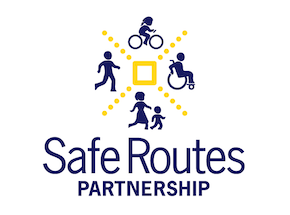Resource Library
This presentation provides an overview of Arkansas Dept. of Education joint use program. Moving from the joint use program, funding, priorities and legislation to support joint use agreements.
Sometimes pictures are more effective than words. This inforgraphic is designed to address the role of communities in increasing access to physical activity opportunities.
This webinar is a follow-up to the webinar Federal Funding for Transportation 101. This provides a 201-level overview on transportation finance to support Safe Routes to School programs.
This study investigates the effect of a school-based intervention called Travelling Green (TG) on children's walking to and from school and total daily physical activity.
This memorandum of understanding is between Compton Unified School District and the L.A. County Department of Public Works.
Improving people’s access to recreation areas such schools and parks through joint use agreements can also increase opportunities for physical activity.
The Kentucky Cancer Consortium contracted with Kentucky Youth Advocates to obtain baseline data about shared use of school facilities with community agencies during non-school hours in Kentucky.
This webinar provides a 101-level introduction to federal funding.
This webinar by PreventObesity.net introduces the concepts of shared use and offers a pratical gude to implementing shared use agreements.
KEY TAKEAWAYS:
Only ¼ of US youth ages 12-15 met national physical activity guidelines in 2012, and levels of physical activity differ by gender and weight status.
How can you make it easier for your community to access local school facilities like gyms, fields, basketball courts, and playgrounds?
Regular physical activity promotes important health benefits and reduces risk for obesity.
The purpose of this study is to describe the prospective relationship between physical activity and academic performance.
Limited evidence exists on the metabolic and cardiovascular risk correlates of commuting by vehicle, a habitual form of sedentary behavior.
The authors are researchers at the University of North Carolina Highway Safety Research Center, Chapel Hil, North Carolina. They provide a review of the health benefits of active transportation as a call to transportation planners to include health in the agenda for transportation planning, funding, and engineering considerations.
Few studies have examined how joint-use agreements between schools and communities affect use of school facilities after hours for physical activity in under-resourced communities. The objective of this study was to assess whether these agreements can increase community member use of these opened spaces outside of school hours.
Limited evidence exists on the metabolic and cardiovascular risk correlates of commuting by vehicle, a habitual form of sedentary behavior. To examine the association between commuting distance, physical activity, cardiorespiratory fitness (CRF), and metabolic risk indicators.
A recent paper in the economics literature finds an inverse relationship between gasoline prices and obesity risk—suggesting that increased gasoline prices via higher gasoline taxes may have the effect of reducing obesity prevalence. This study builds upon that paper.
Availability of public neighborhood parks is associated with physical activity. Little is known about how parks contribute to population energy balance. This study estimated energy expenditure associated with the use of neighborhood parks and compared energy expenditure by activity areas within parks and by neighborhood race/ethnicity and income.
This paper examines parents' responses to key factors associated with mode choices for school trips. The research was conducted with parents of elementary school students in Denver Colorado as part of a larger investigation of school travel.

